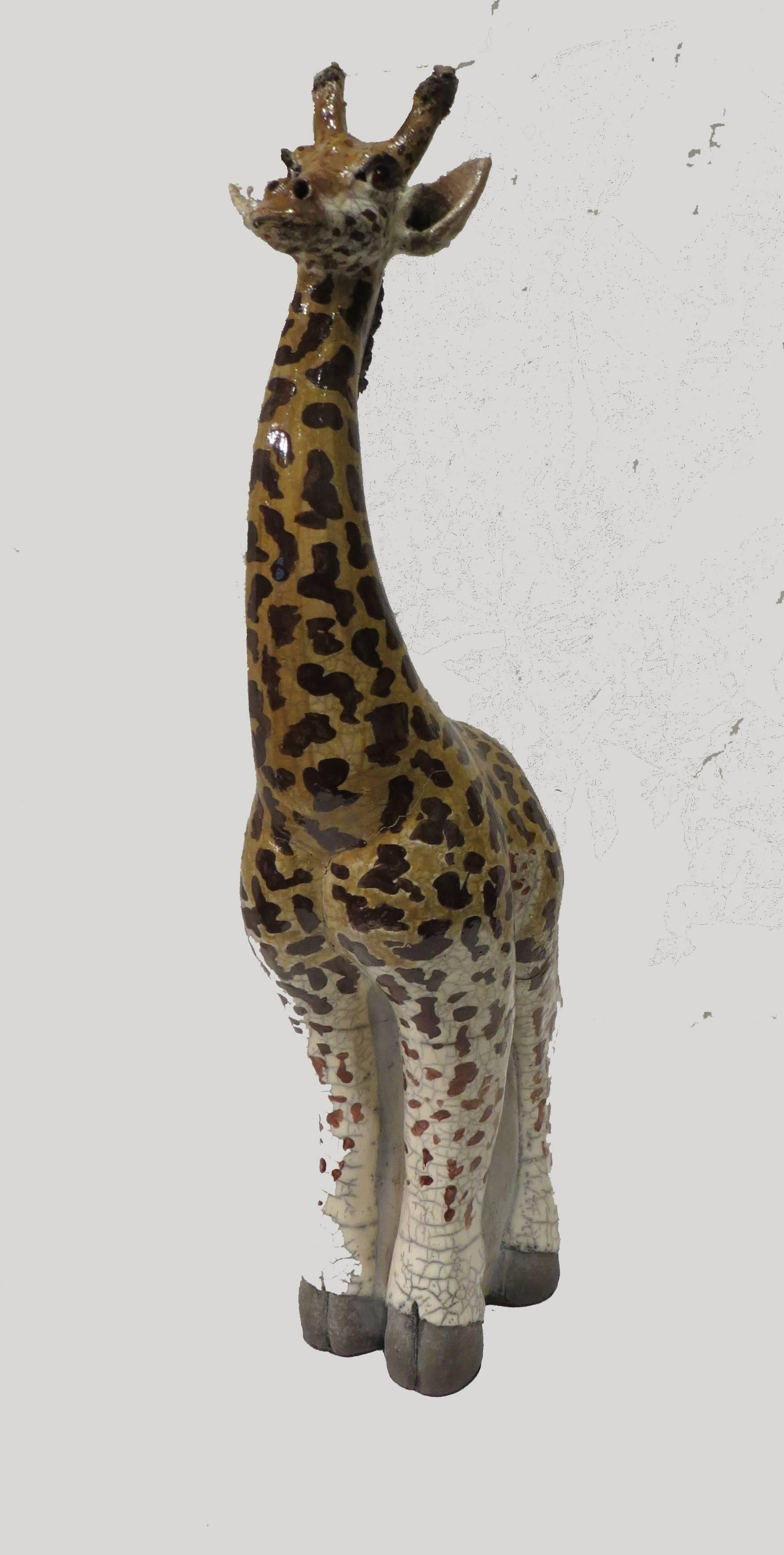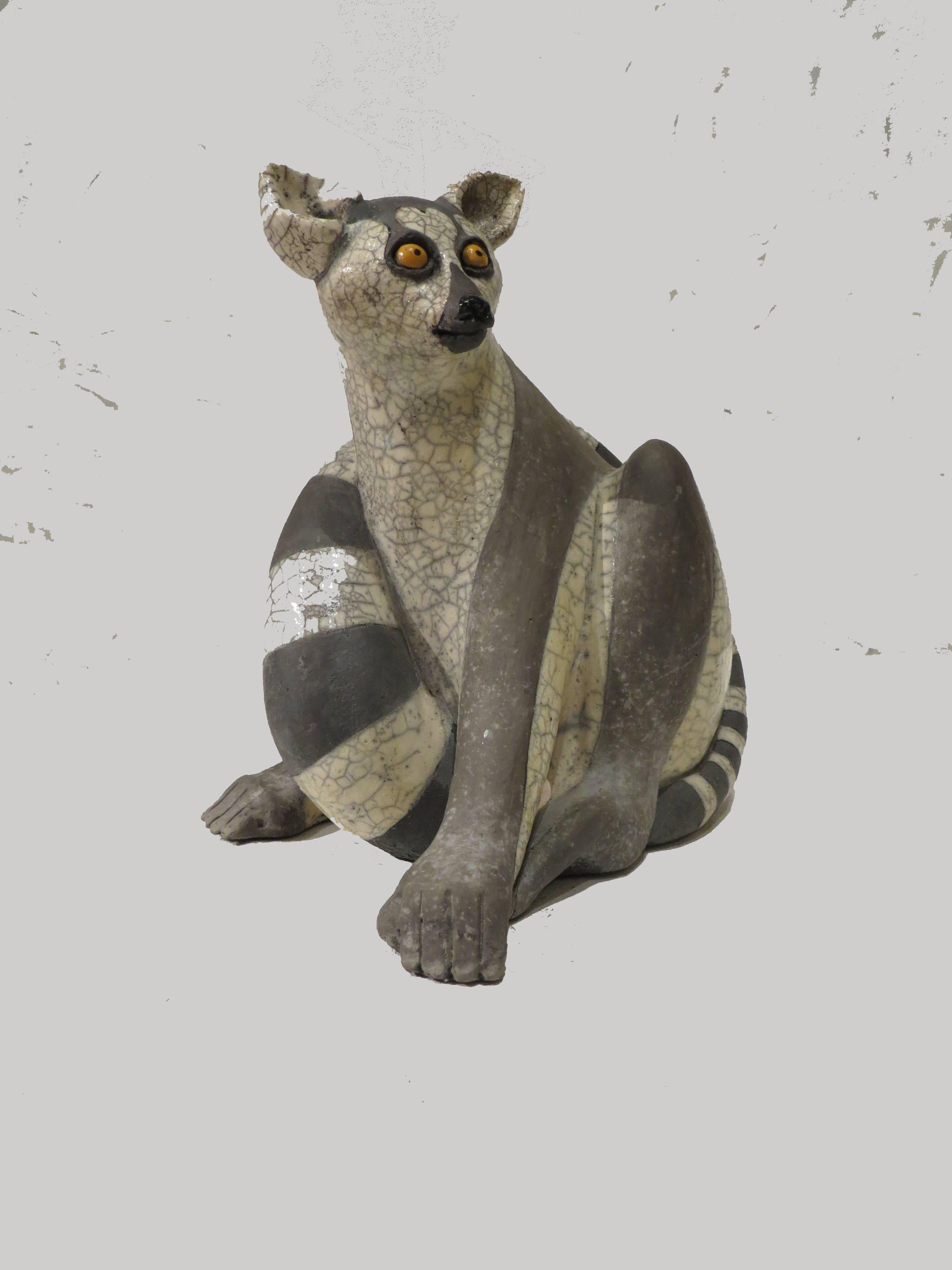Want more images or videos?
Request additional images or videos from the seller
1 of 5
Malvina HoffmanPortrait of Ni-Polog1932
1932
About the Item
Signed, dated, and inscribed on the verso:
Malvina Hoffman/ Den Pasar/ “Nipolog”-/ © 1932/ Bali
Provenance:
The artist; her estate.
Literature:
Malvina Hoffman, Heads and Tails, New York, 1936, pp. 258, 263.
Marianne Kinkel, Races of Mankind: The Sculptures of Malvina Hoffman, Urbana, 2011, pp. 70-71, fig. 3.12.
Malvina Hoffman studied with several American sculptors—George Gray Barnard, Herbert Adams, Gutzon Borglum, and Alexander Phimster Proctor—before moving with her mother to Europe. They eventually settled in Paris, where Malvina became a student of Rodin. Hoffman’s career mixed sculpture, philanthropy, and public engagement. Her most celebrated commission was for the Field Museum in Chicago—a series of over 100 sculptures for the Hall of Man. For this project Hoffman traveled extensively—modeling, photographing, and measuring her models. She would then finish and cast the works in one of her two studios, in Paris and New York, the latter located at the end of Sniffen Court off East 36th Street.
At Denpasar, the capital of Bali, Hoffman met a celebrated traditional dancer named Ni-Polog, who would become the subject of one of her most alluring works, called alternatively Bali Girl or Bali Dancer. The present terracotta, which comes from the artist’s Estate, is likely Malvina Hoffman’s original model for that work and includes an integral base decorated with a Balinese design. Photographs of Ni-Polog taken by Hoffman’s husband Samuel Grimson, who accompanied her to Bali (Fig. 2), as well as of Hoffman measuring Ni-Polog with calipers (Fig. 2), attest to both the beauty of the subject and the care with which the artist documented her features. The rudiments of a portrait in clay visible on the pedestal in the distance is in all likelihood the present work in its infancy. A plaster version of Bali Girl is at the Cedar Rapids Museum of Art, (85.10.65), the finished bronze cast is in the Hall of Man in the Field Museum in Chicago, and a bronze reduction is in the Metropolitan Museum of Art.
- Creator:Malvina Hoffman (1887 - 1966, American)
- Creation Year:1932
- Dimensions:Height: 15.5 in (39.37 cm)Width: 9.25 in (23.5 cm)Depth: 5.5 in (13.97 cm)
- Medium:
- Movement & Style:
- Period:
- Condition:
- Gallery Location:New York, NY
- Reference Number:1stDibs: LU10211748022

About the Seller
5.0
Recognized Seller
These prestigious sellers are industry leaders and represent the highest echelon for item quality and design.
Established in 1997
1stDibs seller since 2012
17 sales on 1stDibs
Typical response time: 11 hours
- ShippingRetrieving quote...Ships From: New York, NY
- Return PolicyThis item cannot be returned.
More From This SellerView All
- Head of a Young African ManLocated in New York, NYProvenance: Private Collection, Spain. This intriguing and enigmatic sculpture depicts the head of a young African man emerging from a circular opening ...Category
Early 1800s Figurative Sculptures
MaterialsTerracotta
- The Three MagiLocated in New York, NYProvenance: Private Collection, Spain. Known as Peruvian alabaster for its translucency and workability, Piedra de Huamanga is a highly prized material from the province of Ayacucho in Peru. In the 17th and 18th centuries, local craftsman in the town of Huamanga began to specialize in the production of small-scale, polychrome religious sculptures made from this distinctive stone. Huamanga sculptures are among the most accomplished examples of carving from the Spanish Americas, where polychrome wood sculpture was a far more common sculptural medium. These works, which were created as independent sculptures or as sculptural groups—such as our three Magi—were intended for ecclesiastical as well as domestics settings. Our three figures likely formed part of a larger Nativity group—a New World variant of the tradition of the Neapolitan Crèche...Category
Late 18th Century Figurative Sculptures
MaterialsAlabaster
- The Story of Joseph from the Second Baptistery Doors, Florence (“The Gates of PaBy Ferdinand BarbedienneLocated in New York, NYFerdinand Barbedienne (Saint-Martin-de-Fresnay 1810 – 1892 Paris) after Lorenzo Ghiberti (Florence, 1378 – 1455) Signed at the lower right of the principal relief: F. BARBEDIENNE Provenance: Private Collection, USA. Barbedienne’s “Gates of Paradise” reliefs are one of the triumphs of nineteenth-century bronze casting and patination. The nine panels that comprise our example are half-size reductions of the famous originals by Lorenzo Ghiberti, made for the Baptistery of Florence and now housed in the Museo del Opera del Duomo. Mounted in an impressive, mullioned frame surround, our work is an exceptional exemplar of the Renaissance Revival, the broadly influential style and movement that infused architecture, design, and artistic culture in the latter half of the nineteenth century. The central scene, The Story of Joseph, is perhaps the most celebrated of the entire series depicting as it does seven episodes from the Biblical narrative integrated into a single composition: Joseph cast by his brethren into the well, Joseph sold to the merchants, the merchants delivering Joseph to the pharaoh, Joseph interpreting the pharaoh’s dream, the pharaoh paying him honor, Jacob sending his sons to Egypt, and Joseph recognizes his brothers and returns home. The surrounding reliefs—two vertical figures in niches, two recumbent figures, and four portrait heads in roundels—are as well faithful reductions of Ghiberti’s original bronzes on other parts of the doors. The maker of these casts was the renowned 19th-century French fondeur Ferdinand Barbedienne. Gary Radke has recently written of this great enterprise: “The Parisian bronze caster Ferdinand Barbedienne began making half-sized copies of ancient and Renaissance sculpture in the 1830s. His firm benefitted enormously from the collaboration of Achille Collas, whom Meredith Shedd has shown was one of numerous pioneers in the mechanical reproduction of sculpture. Their competitors largely devoted themselves to reproducing relief sculpture, but Collas devised a process for creating fully three-dimensional copies. A tracing needle, powered by a treadle, moved over the surface of a full-sized plaster cast or bronze of the original and triggered a complementary action in a cutting stylus set over a soft plaster blank…He signed an exclusive contract with Barbedienne on November 29, 1838, and won medals for his inventions in 1839 and 1844. Barbedienne’s half-sized copies of the Gates of Paradise were famous not only for their fidelity to the original, but also for the way their gilding…suggested the glimmering surface that was hidden under centuries of dirt. Some critics even saw Collas’s and Barbedienne’s work as ‘philanthropic, an exemplary adaptation of industry to the requirements of art, the artist, the workers, and the public alike.’ At 25,000 francs, Collas’s and Barbedienne’s reduction of the Gates of Paradise was singularly more expensive than any other item for sale in their shop. All the reliefs, individual statuettes, and busts were cast separately and could be purchased either by the piece or as an ensemble. Fittingly, Barbedienne’s accomplishment earned him the Grand Prix at the 1878 Paris Exposition Universelle, along with numerous other medals.” Three complete examples of the Barbedienne-Ghiberti doors are known. One, first installed in a chapel in the Villa Demidoff of San Donato near Pratolino, was later acquired by William Vanderbilt...Category
Late 19th Century Figurative Sculptures
MaterialsBronze
- Study for a Stage DesignLocated in New York, NYSigned, lower right: M DobuzhinskyCategory
Early 20th Century Realist Drawings and Watercolor Paintings
MaterialsPaper, Watercolor, Gouache, Pencil
- A Guardian Angel and a ChildLocated in New York, NYProvenance: Cornelius Vanderbilt, New York; by whom gifted in 1880 to: The Metropolitan Museum of Art, New York (80.3.673); deaccessioned and sold: Christie’s, New York, 12 June 19...Category
17th Century Old Masters Portrait Paintings
MaterialsTerracotta, Gesso
- Moroccan, Fez or Meknes: Tall bowl (Jobbana) with geometric designsLocated in New York, NYProvenance: Collection of Emily Johnston De Forest and Robert Weeks De Forest, New York, by 1911-until 1942; thence by descent until 2018. Literature: ...Category
1810s Sculptures
MaterialsEarthenware, Tin Glaze
You May Also Like
- Saint Mark's TheaterBy Bruno LucchesiLocated in Greenwich, CTUnique terracotta sculpture of Saint Mark's Theater.Category
1980s Realist Figurative Sculptures
MaterialsTerracotta
- BallerinaBy Bruno LucchesiLocated in Greenwich, CTTerracotta sculpture by Bruno Lucchesi of a ballerina.Category
2010s Realist Figurative Sculptures
MaterialsTerracotta
- Girafe in TerracottaBy Nicole Doray SoulardLocated in Pasadena, CANicole DORAY SOULARD. Animal ceramic sculptures, works centered on the forward. Nature and the study of bodies are sources of inspiration for her. She produces animals from all over...Category
Early 2000s Realist Figurative Sculptures
MaterialsTerracotta
- Maki in terracottaBy Nicole Doray SoulardLocated in Pasadena, CANicole DORAY SOULARD. Animal ceramic sculptures, works centered on the forward. Nature and the study of bodies are sources of inspiration for her. She produces animals from all over...Category
Early 2000s Realist Figurative Sculptures
MaterialsTerracotta
- HabiBy Francine AuvrouinLocated in Paris, FRPortait sculpture in terracotta or possible in Bronze (made to order)Category
21st Century and Contemporary Realist Figurative Sculptures
MaterialsTerracotta
- Terracotta Christ with LambLocated in San Antonio, TXReligious sculpture of a bearded Christ holding a lamb. This beautiful sculpture is made from terracotta with a layer of gesso. The sculpture is...Category
19th Century Realist Figurative Sculptures
MaterialsTerracotta
Recently Viewed
View AllMore Ways To Browse
Terracotta Sculpture American
Man Dancing Bronze
Bronze Dancing Girls
George Barnard
Bali Dancer
Used Calipers
Bali Girl
Malvina Hoffman
Bronze Sculpture Center
Watch Sculpture
Pop Art Large Sculpture
Small Art Sculptures
Black Abstract Metal Sculpture
Contemporary African Sculpture
Japanese Sculptor
Bronze Sculpture France Contemporary
African Art Gold
Mexican Wood Sculpture





